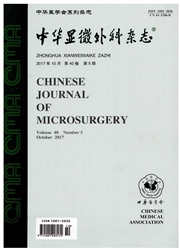

 中文摘要:
中文摘要:
目的建立人侵袭性垂体腺瘤成纤维细胞分离培养的方法,探讨其生物学特性及其在垂体瘤侵袭性生长中的作用。方法差速贴壁筛选法分离培养侵袭性垂体腺瘤成纤维细胞,进行原代及传代培养,倒置相差显微镜下观察原代及传代细胞形态及生长特性,免疫组化染色进行成纤维细胞鉴定,MTT法绘制传代细胞的生长曲线,电镜观察其超微结构。结果侵袭性垂体腺瘤成纤维细胞体外培养生长状况良好,具有活跃的增殖能力。细胞胞体较大,形态不规则,细胞质中可见丰富的粗面内质网和核糖体,高尔基复合体发达,Ⅰ型胶原及波形蛋白表达率在95%以上。结论应用差速贴壁筛选法成功培养出侵袭垂体腺瘤成纤维细胞,其具有旺盛的增殖能力,可能在垂体瘤侵袭性生长过程中起重要作用。
 英文摘要:
英文摘要:
Objective To establish a method for isolation and cultivation of human invasive pituitary adenoma-derived fibroblast in vitro and explore their biological properties in order to investigate the role of the fibroblasts in the invasive growth of the pituitary adenoma. Methods The fibroblasts were isolated from human invasive pituitary adenoma tissue by different rate of adhesion. Primary culture and passage culture were carried out, and growth characteristics of fibroblasts were observed under phase-contrast microscope in primary and passage culture. Immunohistochemical technique was used to identify the fibroblasts. The cell growth curve was measured by MTT method. The ultrastructure was observed under electronmicroscope. Results The cultured invasive pituitary adenoma-derived fibroblasts showed active proliferative ability. The cell bodies was bigger than other tissue fibroblasts, and the cell shape was irregular. The rough endoplasmic reticulum, Golgi complex and ribosome were profuse in the cytoplasm. The positive expression rate of collagen Ⅰ and vimentin of the fibroblasts were above 95%. Conclusion The method of different rate of adhesion is successfully utilized to culture human invasive pituitary adenoma-derived fibroblasts. These cells showed active proliferative ability, and maybe have an importent function in the invasive growth of the pituitary adenoma.
 同期刊论文项目
同期刊论文项目
 同项目期刊论文
同项目期刊论文
 期刊信息
期刊信息
